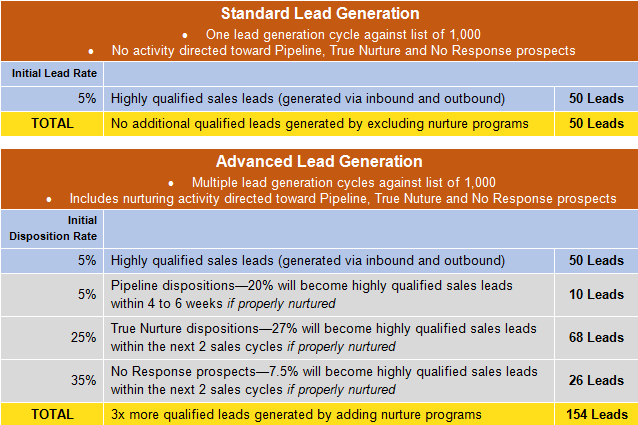For more than 20 years we’ve talked about multi-touch, multi-media, multi-cycle processes that multiply results. At least one software company literally took PointClear’s playbook, which includes details about the multi, multi, multi approach, and turned it into a red-hot piece of software. Wish I had thought of that.
Multi, multi, multi (which is multiple dials, voicemails, emails and in some cases direct mail across several sales cycles) has been re-termed “Cadence.” We think that’s great, because it’s a lot easier to say than what we used to call it.
Some people ask if voicemail and email should be part of the sales lead generation cadence. And my answer is, absolutely. Many of the leads we generate for clients are the result of a call back or email reply. In fact, some years ago a client closed a $1 billion deal when the prospect called us back after the 42nd touch and became a lead. So, I know voicemail and email as a part of the contact cadence works. Like a friend of mine says, how many returned calls do you get if you don’t leave a message?
Others wonder what else should be part of the cadence that is not usually addressed. I have an answer for that is well: Non-lead outcomes. Many companies leave 65% or more of the leads they could have generated on the table by ignoring these non-lead outcomes (often called dispositions). The table below summarizes what I’m saying—simply that your cadence should encompass longer-term opportunities and must include sales lead generation nurturing, as well as short-term opportunities.

The top of this table summarizes the results of standard lead generation—I call these one and done campaigns. The way this usually works is: send a third party a list, send them a script, send them some money and they will throw some so-called leads over the fence to sales.
Sales will ignore these leads because they are conditioned to expect poor quality marketing leads. One division of one of the largest software companies in the world wastes over $200,000 per year generating 9,000 leads, sends them directly to sales and sales refuses to work them. They continue this practice year after year because marketing just cannot find a cheaper source of leads—and that is their only measure—price, not quality.
The bottom of the table summarizes how companies can take advantage of lead and non-lead outcomes to optimize the return on marketing investments.
- On the first pass through a list the same 50 SQLs (sales qualified leads) are identified as with the standard lead generation approach.
- At the same time leads are being generated there are outcomes we call “pipelines.” These are qualified contacts at qualified companies—but there is an action item to accomplish at some point in the future (days, weeks or months) to convert these pipelines to SQLs—our metrics show that 20% of the pipeline outcomes will convert to SQLs on the next touch cycle.
- About 25% of the outcomes will become true nurture dispositions. If effectively nurtured, over two contact cycles, 27% will become SQLs. Note that contact cycles vary by solution but typically a contact cycle is six weeks to three months.
- Another 35% of the outcomes are contacts at companies that we did not have a conversation with. We did not reach them and they did not reply to a voicemail or email. Invariably, we will learn something about the contacts at these companies that will warm-up subsequent touches. Our experience is that 7.5% of these outcomes will convert too SQLs over the next two touch cycles.
Summary
In addition to designing and managing the cadence, you must also design and manage the process of nurturing all outcomes. Instead of starting over with a fresh list of 1,000 suspects and generating another 50 leads, you can contact 820 Pipeline + Nurture + No Response prospects and generate an additional 104 leads. I wrote another blog on this subject, if you’d like to learn more.
This process saves money, increases revenue and helps build a valuable prospect database. What else do you recommend?



